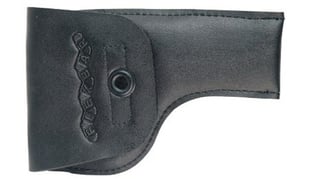A micrometer is an essential tool in a machinist's arsenal, offering unparalleled precision. However, like any precision instrument, its accuracy and longevity are heavily dependent on proper care and maintenance. Here's a deep dive into micrometer care for the meticulous machinist.
Safe Storage is Key
Protective Casing: Always store your micrometer in a protective case when not in use. This shields it from dust, moisture, and accidental drops or bumps.
Dry Environment: Store in a low humidity environment to prevent rust formation. Consider using desiccant packs in your storage area to absorb excess moisture.
Regular Cleaning
Soft Cloth: Use a soft, lint-free cloth to wipe down the micrometer after each use.
Cleaning Solution: For stubborn stains or accumulated grime, dip the cloth in rubbing alcohol. Rubbing alcohol dries fast and doesn't leave residue. We do NOT recommend using compressed air for cleaning, as it will push chips and dust into cracks.
Avoiding Rust
Light Oil: Apply a thin layer of light machine oil to the frame, spindle, and anvil to prevent rusting. Wipe away excess to avoid attracting dirt.
Rust Check: Regularly inspect for any signs of rust or corrosion. If spotted early, it's easier to remove with a non-woven abrasive.
Proper Handling
Handling by the Frame: Always hold the micrometer by the frame. Touching the spindle can transfer oils or dirt, potentially affecting measurements.
Avoid Over-tightening: Over-tightening can damage the micrometer's threads and internal mechanisms. Use a gentle touch, and if your micrometer has a ratchet stop, use it to ensure consistent force.
Calibration and Accuracy Checks
Use Calibration Standards: Regularly check the micrometer's accuracy using calibration standards. This ensures it measures within the specified range.
Check for Wear: Inspect the measuring faces for wear or damage. Even slight deformations can significantly affect precision.
Professional Calibration: Consider sending your micrometer for professional calibration annually, especially if used daily. Travers Tool provides calibration services and carries calibrated micrometers.
Addressing Repairs
Professional Service: If your micrometer is damaged or functioning incorrectly, consult a professional service. DIY repairs can often exacerbate issues.
Spare Parts: Always use manufacturer-recommended spare parts to ensure compatibility and accuracy.
Conclusion
A micrometer is more than just a tool; it's a testament to a machinist's commitment to precision and quality. Regular maintenance doesn't just ensure accurate measurements; it speaks to a machinist's dedication to their craft. Take care of your micrometer, and it'll serve you faithfully for years to come.



